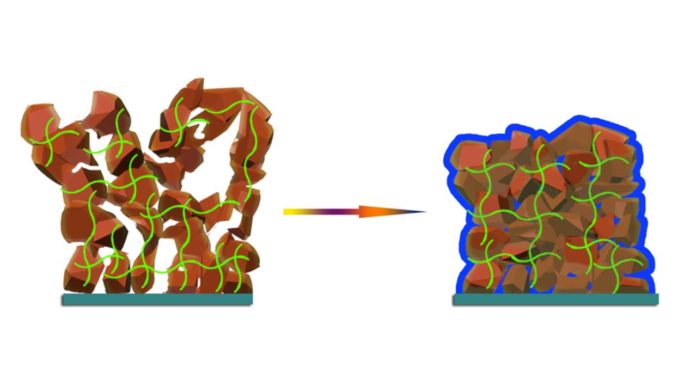Silicon-based materials are promising anodes for next-generation lithium-ion batteries. However, the huge volume expansion and shrinkage during cycling result in the severe displacement of silicon particles and the structural collapse of electrodes.
Penn State scientists addressed this issue by developing a new method that uses a supremely elastic gel polymer electrolyte. This new method allows the silicon to retain the elasticity that enables superior energy transfer, while also maintaining the ultimate integrity of the battery’s electrode.
Donghai Wang, professor of mechanical and chemical engineering, said, “We found that if you surround the silicon-based anode with a cushion of a supremely-elastic gel polymer electrolyte (GPE), it allows the silicon to remain stable, so the particles won’t displace within the electrode.”
The GPE consists of a soft ether domain, which responds to its elasticity and a hard cyclic domain, which prevents excessive swelling of the polymer.
Wang reported, “It’s a new approach, where the two components work synergistically together to make the GPE swell and shrink appropriately while keeping silicon anode structure stable.”
According to scientists, their work could potentially increase the energy storage within lithium-ion batteries by 20%.
Wang said, “This is an enabling technology to allow for the ability to use pure silicon in the anodes. Traditionally, only 5% of silicon is used, so the material’s boosting effect is limited. But by using this method, replacing it with pure silicon will significantly increase the capacity and energy density of the cell.”
“Through the union of the silicon and the GPE, it is a pathway to create the next generation of lithium-ion batteries.”
Additional contributors to the project include mechanical engineering graduate students and postdoctoral fellows, including Qingquan Huang, Jiangxuan Song, Daiwei Wang, and Shuai Liu, chemistry graduate student Yue Gao, and industry partners at Ashland Specialty Ingredients, Shufu Peng, Courtney Usher, and Alan Goliaszewski.
The work is reported in the journal Nature Communications.
